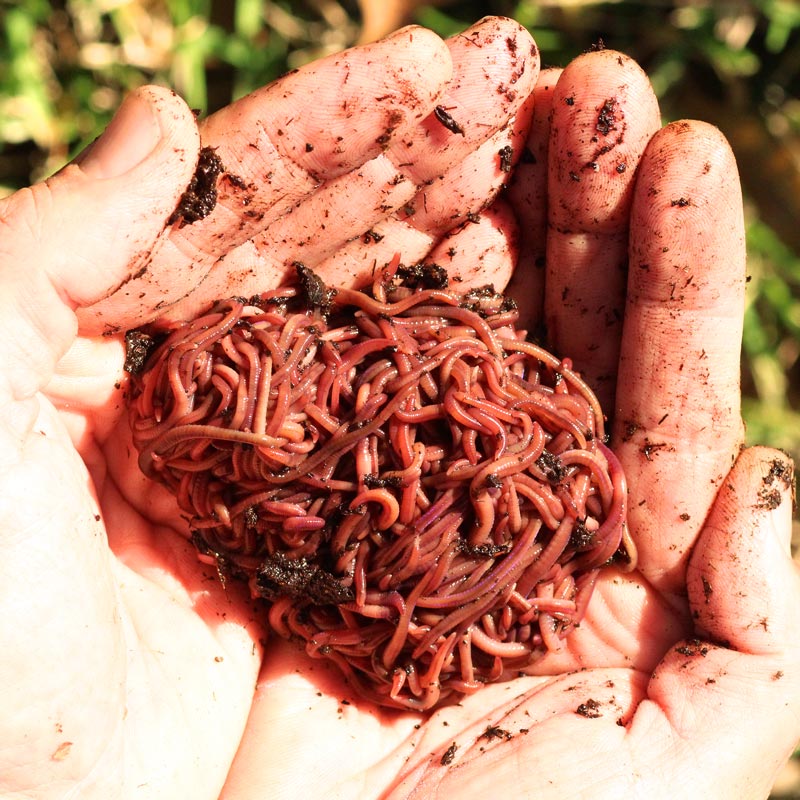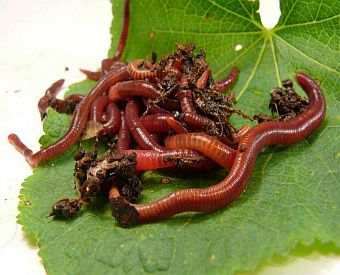Discover the Ultimate Guide to Red Wiggler Worms: Just How to Look after, Type, and Harvest These Beneficial Animals
In the world of sustainable horticulture and composting, red wiggler worms are related to as vital allies because of their capacity to damage down organic issue effectively and generate nutrient-rich castings. Comprehending the details of taking care of these magnificent yet tiny animals, mastering the art of breeding them, and learning the optimum methods to gather their spreadings can considerably enhance the wellness of your soil and plants. As we start this trip to explore the ultimate overview to red wiggler worms, we will certainly reveal practical pointers, professional understandings, and innovative methods that will certainly not just benefit your garden however additionally strengthen your recognition for these useful soil-dwellers.
Establishing Up Your Red Wiggler Environment
When preparing to set up your red wiggler environment, interest to detail and proper preparation are vital. Producing an appropriate environment for your red wigglers is vital for their health and reproduction. Begin by selecting a large and nontransparent container to house your worms, guaranteeing it has appropriate air flow to keep air movement. Pierce small holes in the cover and sides to protect against dampness buildup and enable oxygen blood circulation.
Next, line the base of the container with a layer of moistened bed linen materials such as shredded paper, cardboard, or coconut coir. This bedding provides a comfy area for the worms to tunnel and helps preserve dampness degrees within the environment. Introduce your red wigglers to their brand-new home by gently placing them in addition to the bed linens.
To develop an appropriate living atmosphere, add food scraps such as fruit and vegetable peels, coffee premises, and eggshells regularly. Stay clear of spicy or acidic foods, dairy, meat, and oils, as these can harm your worms. Cover the food scraps with extra bedding to prevent fruit flies and smells. By complying with these actions, you can guarantee a growing environment for your red wiggler worms.
Essential Treatment Tips for Red Wigglers
To make sure the health and long life of your red wiggler worms, it is imperative to implement vital treatment suggestions that complement the careful arrangement of their habitat. Maintain correct wetness levels in the worm bin by frequently changing the bed linen and inspecting. Red wigglers grow in a wet environment, so misting the bedding with water when it appears dry is critical. In addition, ensure ample ventilation in the bin to avoid the build-up of hazardous gases like ammonia. Mixing the bed linens occasionally can assist aerate the setting and advertise healthy decay.

The Art of Red Wiggler Reproduction
Just how can red wiggler dog breeders maximize the reproduction process to keep a healthy and successful worm populace? The art of red wiggler breeding entails creating optimal conditions for these composting creatures to reproduce successfully. To enhance reproducing success, breeders ought to make sure that the worm container setting continues to be wet, aerated, and rich in organic matter. Maintaining a balanced bed linen product, such as a blend of shredded newspaper and food scraps, gives you can try here the needed nutrients for the worms to reproduce and prosper.
To encourage breeding and egg-laying, it is important to keep track of the temperature level within the worm bin. Red wigglers like temperatures in between 55-77 ° F(13-25 ° C )for optimum breeding conditions. Red Wiggler Worms. In addition, preventing extreme temperature variations and providing a dark and uninterrupted atmosphere can boost the worms' reproductive activities

Harvesting and Using Worm Castings
Optimizing the reproduction process and maintaining a healthy and balanced worm population with successful reproduction establishes the phase for red wiggler breeders to utilize the important resource of worm castings. Collecting worm spreadings, likewise known as vermicompost, is an essential action in the red wiggler worm farming procedure. These nutrient-rich castings are a potent natural fertilizer that can improve dirt quality, improve plant development, and enhance plant returns.
One usual method is to create different feeding zones in the worm bin, attracting the worms to move to brand-new bed linens by concentrating food in one area. An additional technique entails spreading out the contents of the bin in a slim layer under brilliant light; worms will certainly tunnel much deeper into the heap, enabling for the very easy removal of the spreadings from the top.
Using these worm castings in your yard or agricultural endeavors can substantially profit plant wellness and soil fertility, making the initiative of harvesting them a fulfilling facet of red wiggler worm farming.
Troubleshooting Common Red Wiggler Issues
When analyzing red wiggler worm farms, dog breeders might run into usual issues that require troubleshooting to keep the health and wellness and performance of their worm population. One widespread trouble is overfeeding, which can lead to an accumulation of leftover food and excess moisture in the worm container.
An additional problem breeders may deal with is the visibility of mites in their worm bins (Red Wiggler Worms). While some mites are harmless, an overpopulation can suggest an imbalance in the bin's setting. To address this, adjust the wetness degrees by adding much more bed linen products like shredded paper or cardboard to produce a drier environment that is much less beneficial for mites
Last but not least, if worms are trying to get visit away the container, it could indicate negative conditions such as level of acidity or high temperatures. Inspect the pH levels of the bed linens and guarantee correct ventilation to control temperature level and wetness levels within the worm ranch.
Conclusion
In conclusion, red wiggler worms are important animals that can profit your yard or garden compost bin. Be conscientious to typical issues that might develop and resolve them quickly to make sure the health and wellness and productivity of your red wiggler populace.
Maintain the worm bin in a suitable place away from straight sunlight and severe temperature levels to offer a comfortable living atmosphere for your red wigglers.
Optimizing the recreation procedure and keeping a healthy worm population through effective breeding sets the stage for red wiggler breeders to utilize the important resource of worm castings. Gathering worm castings, also recognized as vermicompost, is an important step in the red wiggler worm farming process. One typical technique is to develop separate feeding areas in the worm container, tempting the worms to move to brand-new bed linen by concentrating food in one area.When evaluating red wiggler worm farms, dog breeders may encounter typical problems that require troubleshooting check that to keep the health and wellness and productivity of their worm population.